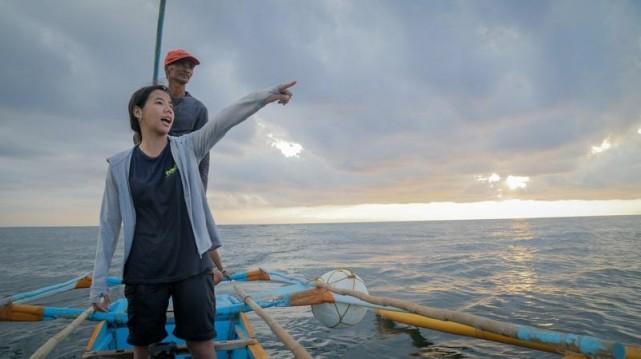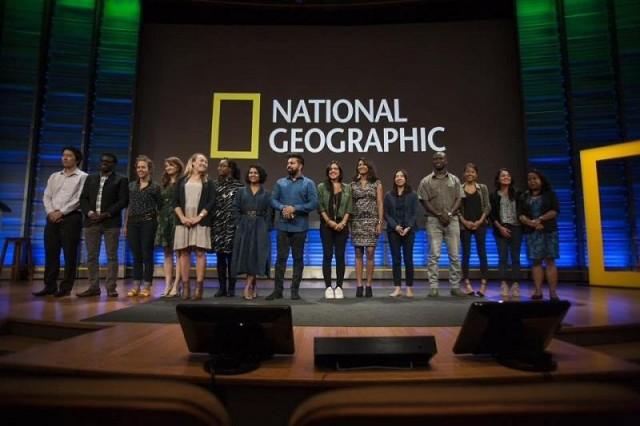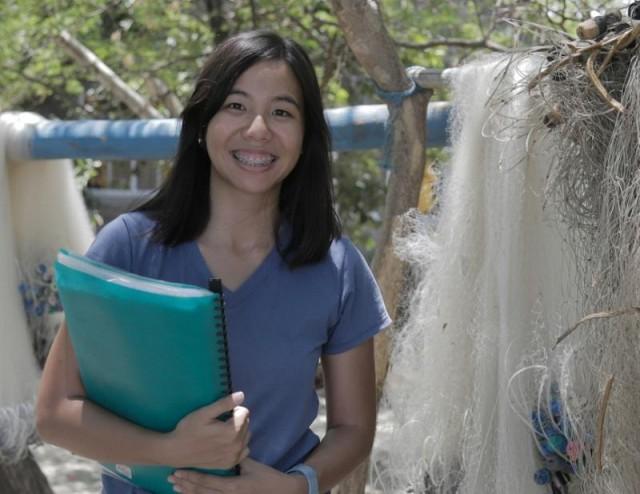Meet Erina Pauline Molina, a young Filipina exploring new ways to save our oceans
Armed with a bachelor’s degree in Environmental Science and a love for nature as deep and boundless as the ocean, Erina Pauline Molina, a National Geographic Young Explorer, is on an important quest.
“My mission is to highlight the beauty and importance of our ocean today,” shared the 25-year-old environmental scientist, “and at the same time empower people from all walks of life to be part of biodiversity conservation: from young to old; farmers to fishers; rural to urban dwellers.”
Taking the plunge
After graduating from Ateneo de Manila University in 2012, Erina went on to work with local environmental organization, Haribon Foundation. While at the foundation, she participated in a collaborative research project with Newcastle University in the UK, in which she focused on identifying vulnerable or locally extinct reef fish species with the help of Filipino fishers.
“I did a project on exploring shifting baselines, and identifying vulnerable and extremely depleted reef fish species in the northern part of the Philippines using local knowledge as primary tool to detect changes,” explained Erina.
The concept of “shifting baselines” was popularized by fisheries scientist Daniel Pauly in 1995. In his paper, the marine biologist explained that as fish species diminish and even disappear over time, newer generations of scientists and fishers end up accepting the current population level as the norm, instead of correctly acknowledging the declining trend: a lowering of standards, so to speak.
“This means that it is possible that people from different age groups may have varying perceptions of the environment,” said Erina. Having fallen in love with the ocean through snorkelling and scuba diving, this realization was an eye-opener for her. “This means that past conditions were so much better than [the state of the ocean] today.”
In order to take her research further, Erina applied for a grant from the National Geographic Society in 2015. “Growing up in the North, I was curious as to how fishing situation changed in the area throughout the years.”
Receiving the grant allowed Erina to conduct interviews with 305 fishers in 17 fishing villages across Ilocos Sur. Through her interviews, she learned more about the fishers’ perceptions on changes in fishery stock, fishing ground conditions, and diminishing species. The data she gathered allowed her to explore how this generation of local fishers were unaware of the local marine ecosystem’s degradation.
The big shift
Since then, however, Erina’s research has taken a more specific trajectory: the conservation of a critically endangered marine mammal in the Philippines called the dugong (or “sea cow”).
Classified as a vulnerable species, the dugong weighs over 800 pounds and grows up to almost 10 feet in length. Dugongs can be found in the Indian and western Pacific Oceans, feeding upon sea grasses in shallow coastal waters. This herbivorous underwater mammal’s existence is threatened, due in no small part to improper fishing practices, boat collisions, and extensive hunting. In fact, according to a worldwide IUCN study in 2002, the global dugong population has declined by 20% over the last 90 years.
As part of her dugong conservation advocacy, Erina participated in an Educator-Explorer partnership program. This involved connecting with a kindergarten class in Los Angeles, California through a National Geographic Educator. Through video messages, letters, and Skype calls, Erina introduced herself as an ocean scientist to the children, communicating with the class over a period of 4 months. Getting to meet the students was, in Erina’s words, her “most unforgettable experience.”
“It was such a beautiful moment; the kids were all so eager to ask me questions about the work that I do. There were also really surprised to meet me. Some of them didn’t even think that I was a real person.”
Despite their young age, the children were able to support Erina’s mission by building a “dugong-safe” boat and fishing gear prototype. For Erina, this proved that there really is no such thing as “too young” when it comes to participating in environment conservation.
Everybody in
As a Young Explorer, Erina attended a series of “science-telling” boot camps and workshops to learn how to tell more compelling and impactful science stories. She has also had the opportunity to meet and work with innumerable scientists, photographers, storytellers, filmmakers, and educators, all united by a single goal: to explore ways to make the world a better place.
As Erina put it: “Meeting all these people — all change-makers in their own ways — was truly inspiring.”
Erina is currently working with other Young Explorers on a collaborative project called The Underwater Field Trip, intended to be a 5-minute 360 virtual reality conservation film that showcases the Philippine’s marine ecosystem in the Philippines, particularly the Apo Reef Natural Park. The film is currently in post-production, and will be shown in different schools in Sablayan, Occidental Mindoro come 2019.
At present, Erina is pursuing a master’s degree in Environmental Science at the University of the Philippines Diliman. She plans to continue her biodiversity conservation advocacy work afterwards, and hopes to persuade more people to take up a more active role in saving our planet.
“Despite the different conservation challenges we face in saving different species from extinction, it is still good to hope for healthier and diverse ecosystems for future generations to enjoy,” shared Erina. “And I believe that environmental education will play a major role, and is key to biodiversity conservation.
“Whether you are a scientist, photographer, filmmaker, storyteller, or just a normal citizen, we can all make an impact.” — LA, GMA News

Need a wellness break? Sign up for The Boost!
Stay up-to-date with the latest health and wellness reads.
Please enter a valid email address
Your email is safe with us









